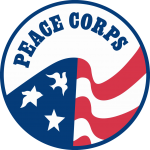FOR IMMEDIATE RELEASE
Contact: 202.692.2230 or pressoffice@peacecorps.gov
Peace Corps Director Calls on College Students to Make a Difference After Graduation Through International Service
Urges College Seniors to Take Advantage of New, Shorter
Application Process and Apply by September 30
WASHINGTON, D.C., September 19, 2014 – As many college seniors are thinking about life after graduation, Peace Corps Director Carrie Hessler-Radelet today called on students to consider making a difference through international service in one of the agency’s more than 60 countries around the world. As part of her call to service, Hessler-Radelet also urged college seniors to take advantage of the agency’s new, shorter application process and apply to become a Peace Corps volunteer before September 30.
“With our new, shorter application process, we’re seeing record numbers of Americans apply for Peace Corps service,” Hessler-Radelet said. “While the school year may have just begun, I want to make sure college seniors considering the Peace Corps apply as soon as possible so they can secure the volunteer position of their choice and leave for service shortly after graduation.”
In July, Hessler-Radelet announced sweeping changes to the agency’s application process that have made applying to the Peace Corps simpler, faster and more personalized than ever before. Under the new recruitment initiative, applicants can now choose their country of service and apply to specific programs through a new, shorter application that can be completed in less than one hour.
The key recruitment reforms include:
• Peace Corps applicants can now choose the programs and countries they want to apply to – selecting the path that best fits their personal and professional goals. Applicants can apply to between one and three specific programs at a time, or they can choose to apply for service wherever they are needed most. The Peace Corps website now lists all open programs (http://www.peacecorps.gov/openings/) by country, work area and departure date, so applicants can browse service opportunities.
• A new, shorter application is now available on the Peace Corps website that can be completed in less than one hour. What used to be more than 60 printed pages that took more than eight hours to complete is now a short online application that focuses solely but rigorously on the most relevant information to help the agency select the best candidates.
• Each open Peace Corps position now has clearly identified Apply By and Know By deadlines, so applicants know when they can expect to receive an invitation to serve. If they apply on time, they’ll know if they were selected on time – just like applying to college or a job. These deadlines give applicants more certainty than ever and help them plan for the future.
Click here (http://files.peacecorps.gov/openings/PC_Process_infographic.pdf) to view an infographic on Peace Corps’ new application and selection process.
“There is no better and more important time to apply to serve with the Peace Corps and make a difference,” Hessler-Radelet said. “Peace Corps’ work – helping to reduce poverty, fostering economic growth, and building relationships in some of the most vulnerable communities across the globe – has never before been more important.”
Hessler-Radelet, who was sworn in as the agency’s 19th director in June and comes from a four-generation Peace Corps family, has led one of the most extensive reform efforts the agency has ever undertaken since she joined the agency in 2010. In addition to the recruitment reforms announced this summer, the Peace Corps has dramatically improved the quality of support it provides to volunteers, strategically targeted its resources and country presence to maximize impact, and streamlined operations to create a culture of innovation and excellence.
About the Peace Corps: As the preeminent international service organization of the United States, the Peace Corps sends Americans abroad to tackle the most pressing needs of people around the world. Peace Corps volunteers work at the grassroots level with local governments, schools, communities, small businesses and entrepreneurs to develop sustainable solutions that address challenges in education, health, economic development, agriculture, environment and youth development. When they return home, volunteers bring their knowledge and experiences – and a global outlook – back to the United States that enriches the lives of those around them. President John F. Kennedy established the Peace Corps in 1961 to foster a better understanding among Americans and people of other countries. Since then, more than 215,000 Americans of all ages have served in 139 countries worldwide. Visit www.peacecorps.gov to learn more.
###

